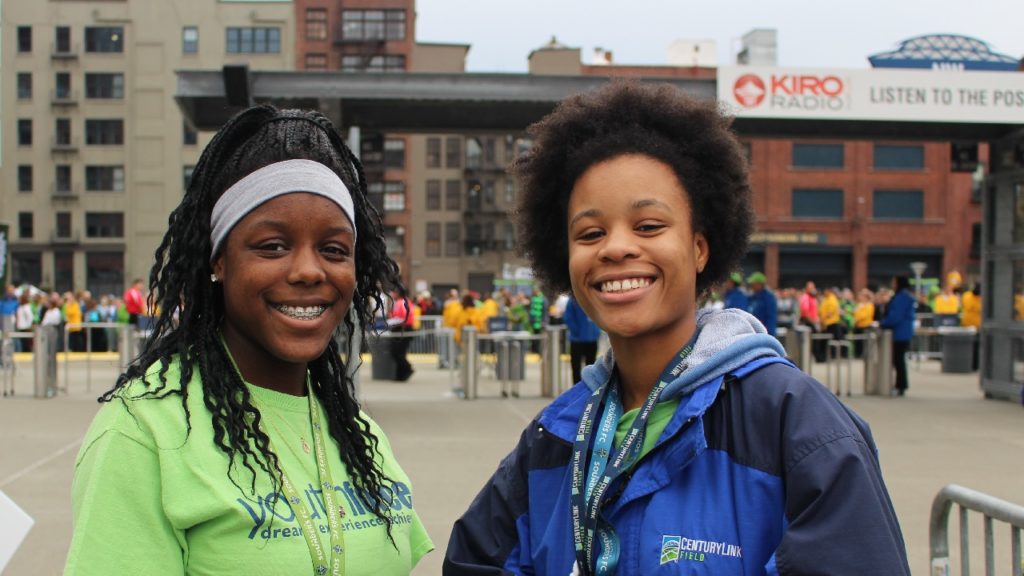
Andrew Herrema, Executive Director, Curamericas Global
Special to the Philanthropy Journal
By Andrew Herrera, Executive Director, Curamericas Global
April 7 is World Health Day, a global health awareness day celebrated each year under the sponsorship of the World Health Organization and organizations focused on public health issues all around the world. Curamericas Global is one of these organizations.
A global health nonprofit founded by Dr. Henry Perry, Curamericas Global works with communities that have some of the highest child and maternal mortality rates in areas where preventable diseases like malnutrition, pneumonia, and complications from childbirth can quickly lead to death. Based on repeated success around the world, Curamericas Global is scaling its programs using a proven methodology and focusing on prevention, health education, and establishing relationships with existing health facilities.

Dr. Henry Perry with Dr. Mario Valdez, Project Director of Curamericas Guatemala Casa Materna (Photo Credit: Curamericas Global)
Dr. Perry embraced his desire to help others early in life. A young medical student at Duke University during the summer of 1969, he traveled to the Aymara village in Bolivia for the first time. There, in the 13,000 foot-high Northern Altipano, he helped vaccinate 10,000 children who had no access to medical care.
“This was a significant moment in my life, to be involved on a day-to-day basis with local people and their struggles,” recalled Perry. “I was practicing surgery and general medicine, so it was a great privilege, doing what I intended to spend the rest of my life’s work on, which was being a medical missionary.”
“The opportunity of creating an organization became possible and just that idea, it was very empowering and invigorating to realize that we may be building something that had longevity to it,” Perry said.
Within two years, Perry founded a nonprofit called Andean Rural Health Care (ARHC). Within five years of project implementation in Bolivia, the deaths of children under age five were reduced by 62% on average. By the 1990s, ARHC’s programs stretched out into Mexico, Haiti and Guatemala. By the 2000s, ARCH programs went beyond the Americas.
 The organization took on a new name, Curamericas Global, and extended its reach to Liberia with the Nehnwaa Child Survival project, as well as to Kenya, partnering with Ronald McDonald House Charities with the Kenya Ministry of Health to create Casa Materna, a community birth center.
The organization took on a new name, Curamericas Global, and extended its reach to Liberia with the Nehnwaa Child Survival project, as well as to Kenya, partnering with Ronald McDonald House Charities with the Kenya Ministry of Health to create Casa Materna, a community birth center.
Throughout the period of steady growth and expansion, Perry also remembers early setbacks the nonprofit faced in Bolivia, from political turmoil and safety concerns to organizational struggles. However, these difficulties could not stand in the way of the recognition his team received for its quality of work or their innovative approach to programs. It was also during this time that Perry discovered the importance of having a mentor.
“One person who was particularly critical in the development of Curamericas Global was John Wyon, who taught at Harvard,” says Perry. “John had been a medical missionary in Ethiopia and India and he had a lot of experience working on community-based health initiatives in India.”
“John was my mentor when I started Andean Rural Health Care’s initial work on the Northern Altiplano of Bolivia. Through his guidance, we eventually – after many false starts, setbacks, and frustrations – established what we call the census-based, impact-oriented approach.”
Once fully defined, Perry and his team brought the Census-Based, Impact-Oriented methodology (CBIO) to Haiti, Mexico and in the US as well. The specific stages of the CBIO process include the following:
• Planning: This includes house to house visits to identify and reach each individual within the project area so ALL are accounted for. Disease and death patterns are also investigated, as well as community-driven priorities, which allows community health workers to accurately understand the current causes of preventable deaths and the interventions that are necessary. The community is an active partner in the planning, implementation and evaluation phases of the program, fostering community ownership and, therefore, long-term sustainability.
• Implementation & Monitoring: All individuals are regularly visited by local community health workers who are volunteers elected by their community. This ensures continuous delivery of service and health monitoring.
• Epidemiological Surveillance: Births, deaths, and migration are monitored monthly, quarterly, and annually so that the program can quickly respond to the needs of the community.
• Home Visits: These are conducted on a regular basis, trusting relationships are established and everyone’s health is regularly monitored and recorded.
• Group Meetings: Health Education meetings are held at a time that is coordinated with other activities in the community. Families that are not able to attend receive the information during home visits ensuring that every member of the community receives access to health care.
• Care Groups: Volunteer peer educators meet regularly with the project staff for training and supervision. Each volunteer is responsible for regularly visiting 10-15 of her neighbors, sharing what she has learned and facilitating behavior change at the household level. Care Groups create a multiplying effect to reach every beneficiary household and provide the structure for a community health information system that reports on new pregnancies, births and deaths detected during home visits.

Photo Credit: Curamericas Global
Through this approach, Curamericas Global achieved measurable reduction rates in the deaths of children in their first five years of life. Perry and his team quickly realized the true value of the CBIO methodology and it became the core element of the organization’s work.
“We developed long-term partnerships with organizations, built capacity and cultivated local leadership,” explained Perry. “These relationships had a longer lasting effect, and with the stronger focus on measuring impact on mortality, or other very important health indicators – like nutritional state– we brought incredible value to these communities that could live on and, hopefully, be sustainable.”
Perry continues to share his knowledge and experience with organizations and other nonprofits. Just as his mentor shared knowledge with him, Perry encourages any and all practitioners to seek mentors and collaborators both to learn and to extend all possibilities. He envisions many more partnerships forming among Curamericas Global and communities around the globe and welcomes the opportunity to continue learning and teaching along the way.
Perry has authored more than 100 publications and two books, establishing him as a global champion for the primary health care movement. As a senior scientist and professor at John’s Hopkins University, Perry has mentored thousands of students and practitioners. He currently advises the Bill & Melinda Gates Foundation on its efforts to scale up community health globally.
Andrew Herrera is the Executive Director for Curamericas Global. Before joining the nonprofit in 2009, Herrera served with the City of Raleigh Parks and Recreation and spent a year studying in Ecuador.
Curamericas Global is a global health nonprofit that works with communities that have some of the highest child and maternal mortality rates in areas where preventable diseases like malnutrition, pneumonia, and complications from childbirth can quickly lead to death.





